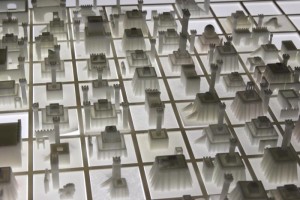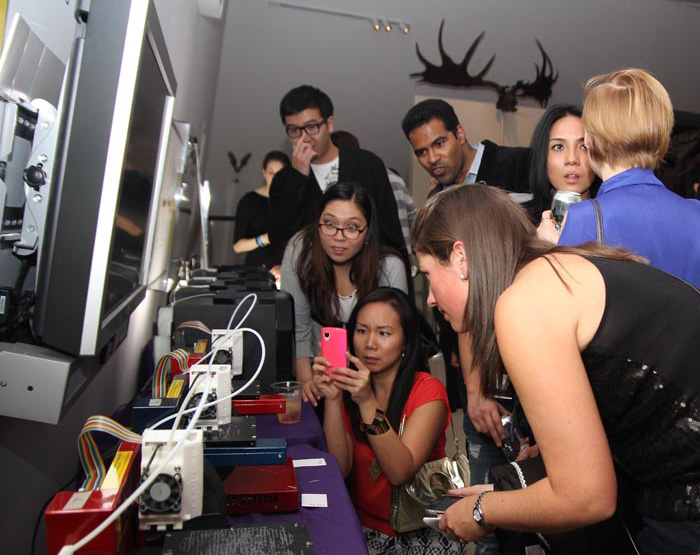From the name, you might guess that Toronto-based Makelab was a local hackerspace where you’d pay membership fees to use their CNC machines and 3D printers on the weekend. Makelab, however, is a pretty different sort of creature. Jonathan Moneta, the company’s founder, has a background in event planning. Instead of sticking to one-time events, though, Jonathan wanted to create a repeatable experience so that people could come to him and enlist his services again and again. And, so, Makelab’s collaborative 3D printing experiences were born.
Jonathan and his team made a deal with the manufacturers of the Up! 3D printer to obtain 10 Up! machines, the Up! Mini and the Up Plus 2. Jonathan explained that, in most hackspaces and other venues that host 3D printing workshops, there may only be a few machines that attendees can use to take part in the 3D printing experience. With 10 printers, Makelab can set up a workshop at your local bar and get everyone printing at least one object.


To make 3D printing more accessible to high school classrooms, Makelab sells a $1,500 starter pack that includes an Up! Mini 3D printer and the tools to use it. Makelab invites one teacher and three students to come in and learn the ins and outs of the Up! Mini – how to use it, how to maintain it and how to troubleshoot and solve inevitable 3DP problems. They’re then sent back to school with the machine, along with some spools of filament, ready to get it set up in their classroom. The Makelab team also offers follow-up services to the classrooms, helping students and teachers with whatever they need upon purchasing the package. The Up! comes with a manufacturer’s warranty, but Makelab will provide classrooms with spare parts to tide them over until they receive theirs from the manufacturer.
Though Makelab will be increasing its ties with local schools, possibly introducing future students to Makelab’s own business partners in an attempt to provide them with real world experience, the firm sees itself, ultimately, as an events business. They’ve got more events lined up for the future and are in the process of looking for other 3D printer manufacturers to add to their line-up. Because Makelab events are often in very public spaces, it’s a great opportunity to expose a manufacturer’s brand to large audiences. Any manufacturers out there might want to head over to their site and check them out.
Source: Makelab



